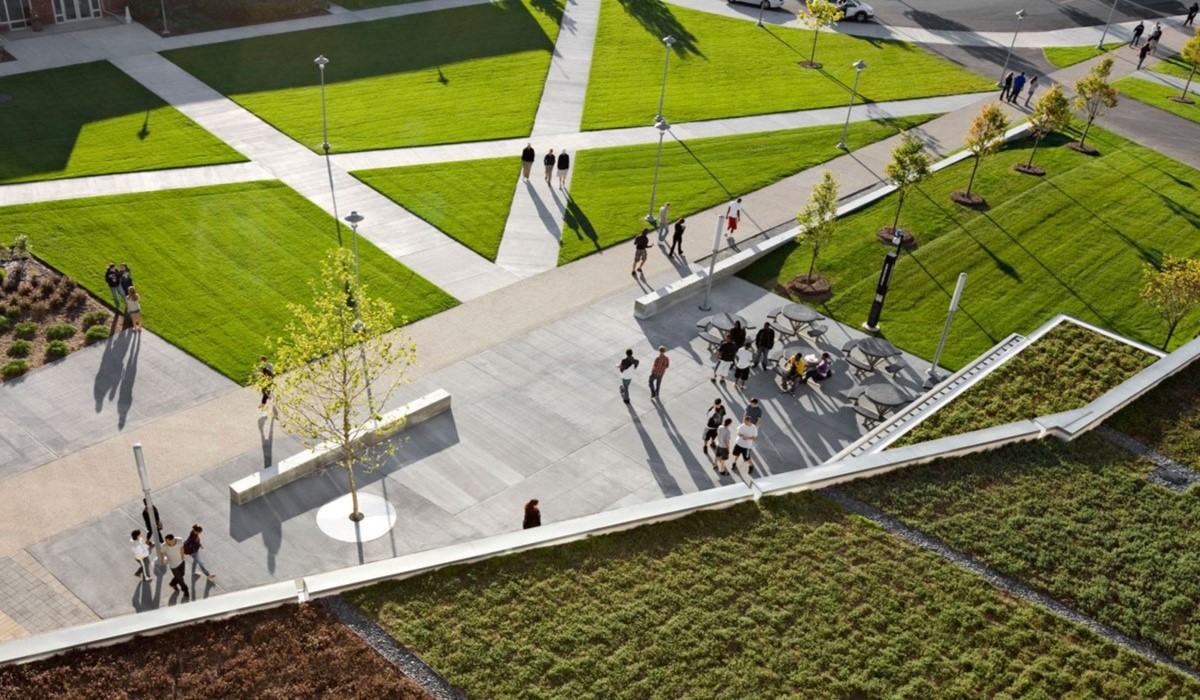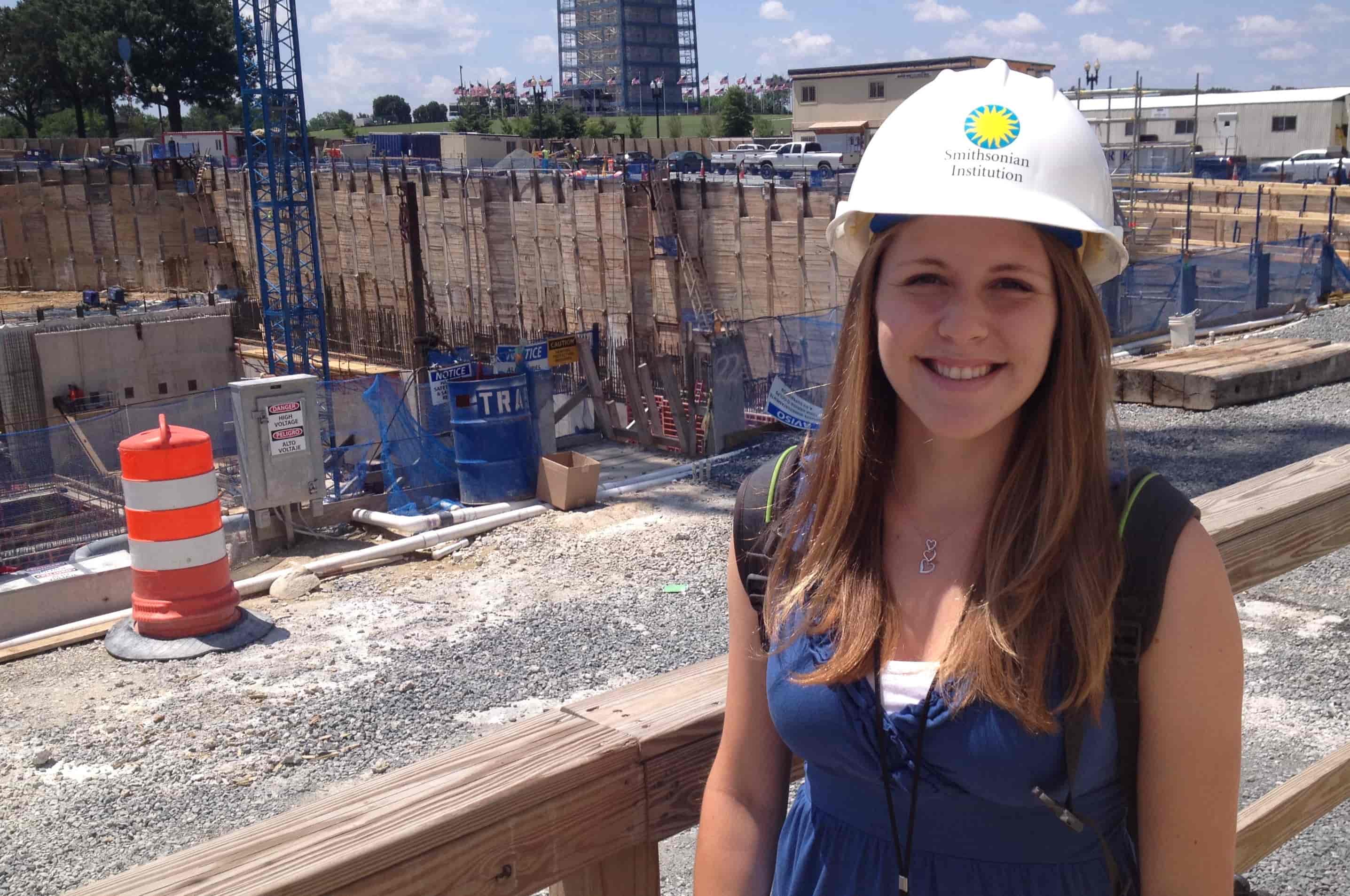Home>diy>Planning & Engineering>How Much Does A Landscape Architect Make From Beginner To Experienced?


Planning & Engineering
How Much Does A Landscape Architect Make From Beginner To Experienced?
Modified: August 16, 2024
Discover the salary range for landscape architects from entry-level to experienced professionals. Explore the earning potential in planning and engineering careers.
(Many of the links in this article redirect to a specific reviewed product. Your purchase of these products through affiliate links helps to generate commission for Storables.com, at no extra cost. Learn more)
Introduction
When considering a career as a landscape architect, it is essential to have a clear understanding of the potential earnings at different stages of your professional journey. The landscape architecture industry offers a wide range of opportunities for growth and development, but it is important to have realistic expectations regarding salary. In this article, we will explore the factors that influence landscape architect salaries, the income potential at various experience levels, and the regional variances in compensation.
Before we delve into the details, it’s important to note that landscape architecture is a highly specialized field that requires a unique blend of artistic vision, technical skills, and knowledge of environmental sustainability. As a landscape architect, your primary role is to create outdoor spaces that are functional, aesthetically pleasing, and sustainable.
Now, let’s dig deeper into the factors that can have an impact on your income potential as a landscape architect.
Key Takeaways:
- Entry-level landscape architects can expect to earn between $40,000 and $60,000 annually, with opportunities for mentorship and skill development. It’s an investment in a rewarding career path.
- Experienced landscape architects, especially those in leadership positions or working independently, can potentially earn salaries of $80,000 to $120,000 or more per year. Reputation, demand, and project size influence income potential.
Factors Affecting Landscape Architect Salaries
Several factors can influence the salaries of landscape architects. These factors include:
- Educational Background: The level of education and the quality of the institution you attended can have a significant impact on your earning potential as a landscape architect. Those with advanced degrees or certifications often earn higher salaries.
- Experience: Similar to many professions, experience plays a crucial role in determining a landscape architect’s salary. As you gain more years of experience and build a solid portfolio, you become more valuable to employers.
- Specialization: Landscape architecture encompasses a wide range of specializations, such as urban design, green infrastructure, and sustainable design. Specializing in a specific area can make you more marketable and potentially lead to higher salaries.
- Location: The geographical location can significantly impact salary ranges for landscape architects. The cost of living, demand for landscape architects, and local market conditions all contribute to the salary levels in a particular area.
- Company Size: The size and type of the firm you work for can also affect your salary. Larger firms tend to have more resources and may offer higher salaries, while smaller firms may provide more hands-on experience and opportunities for advancement.
- Clientele: The type of clients you work with can also affect your salary. Landscape architects who work with high-profile clients or prestigious projects may command higher fees for their services.
These factors interact with each other, creating a complex landscape of salary ranges within the profession. It’s important to consider these factors when evaluating your salary expectations and career goals as a landscape architect.
Salary Range for Entry-level Landscape Architects
As an entry-level landscape architect, your salary will typically be at the lower end of the spectrum. However, it’s important to keep in mind that salaries can vary based on factors like location, firm size, and demand for landscape architects in a particular area.
On average, entry-level landscape architects can expect to earn between $40,000 and $60,000 per year. This range can vary depending on your geographical location and the firm you work for. For example, cities with a higher cost of living and more demand for landscape architecture services may offer higher starting salaries.
While entry-level salaries may seem modest, it’s important to view them as an investment in your future career growth. As you gain experience, develop your skills, and build a strong portfolio, you can expect your salary to increase over time.
In addition to your base salary, entry-level landscape architects may also receive benefits such as healthcare coverage, retirement plans, and paid time off. It is important to inquire about these benefits when considering job offers and to assess their overall value.
It’s worth noting that entry-level landscape architects often have the opportunity to work closely with more experienced professionals, which provides valuable mentorship and learning opportunities. This hands-on experience can be invaluable for career development and may lead to quicker salary progression.
Overall, while entry-level salaries may not be as high as those of more experienced landscape architects, they provide a solid foundation for building a successful and rewarding career in landscape architecture.
Average Salary for Mid-level Landscape Architects
As you progress in your career as a landscape architect and gain several years of experience, you can expect your salary to increase to the mid-level range. At this stage, your expertise and track record of successful projects will contribute to your earning potential.
The average salary for mid-level landscape architects typically ranges between $60,000 and $80,000 per year. However, it’s important to note that salaries can vary based on factors such as location, firm size, specialization, and the current market conditions.
At the mid-level, landscape architects take on more responsibility in project management, client interaction, and design decision making. This increased level of experience and expertise can command higher salaries, particularly when working on complex and high-profile projects.
Mid-level landscape architects may also have opportunities for career advancement within their firms. For example, they may move up to a senior landscape architect role or take on leadership positions within project teams. These advancements often come with salary increases as well as added responsibilities.
In addition to their base salary, mid-level landscape architects may receive additional compensation such as performance bonuses or profit-sharing, depending on the firm’s structure and financial success. These additional benefits can add to their overall income and reward their contributions to the firm.
Overall, the mid-level salary range for landscape architects reflects their growing experience, expertise, and responsibilities within the profession. It is an important stage in career development and provides a solid foundation for further growth and advancement.
Income Potential for Experienced Landscape Architects
For experienced landscape architects who have established their reputation and have a strong portfolio of successful projects, the income potential can be quite lucrative. Experience, expertise, and a track record of delivering exceptional designs are highly valued in the industry.
At this stage, experienced landscape architects can earn salaries ranging from $80,000 to $120,000 or more per year. However, it’s important to note that the upper end of the salary range is often achieved by those who have reached top leadership positions within their firms, such as principal or partner.
In addition to their base salary, experienced landscape architects may have the opportunity to earn additional income through profit-sharing, performance bonuses, or project-based incentives. These financial incentives reward their contributions to the success of the firm and their ability to bring in and manage high-profile projects.
Experienced landscape architects may also have the option to work as independent consultants or start their own landscape architecture firms. This can provide even greater earning potential, as they have full control over the projects they take on and the fees they charge.
The income potential for experienced landscape architects is often influenced by their reputation within the industry, the demand for their services, and the size and type of projects they work on. Building a strong professional network and maintaining relationships with clients and industry professionals can also contribute to higher income opportunities.
Overall, experienced landscape architects have the potential to earn a substantial income, especially if they have a successful track record and have positioned themselves as industry leaders. This stage of the career offers numerous opportunities for financial success and professional fulfillment.
Salaries for landscape architects can vary based on experience and location. On average, beginners can expect to make around $40,000-50,000, while experienced professionals can earn $80,000-100,000 or more. Keep in mind that these figures can fluctuate based on factors such as education, certifications, and the specific employer.
Factors Influencing Salary Growth in Landscape Architecture
Several factors can impact salary growth for landscape architects as they progress in their careers. These factors play a significant role in determining how quickly their income can increase over time. Here are some key factors that influence salary growth in landscape architecture:
- Experience: The number of years of experience is often the most influential factor in salary growth. As landscape architects gain more experience, their value to employers increases, which can lead to higher salaries.
- Skills and Specializations: Developing specialized skills and knowledge in specific areas of landscape architecture can make professionals more valuable and marketable. Specializations such as sustainable design or urban planning can command higher salaries due to their increasing demand in the industry.
- Professional Reputation: Building a strong reputation in the industry can positively impact salary growth. Landscape architects who have a track record of successful projects and a solid professional network may be able to negotiate higher fees for their services.
- Continuing Education and Certifications: Investing in ongoing professional development through certifications, workshops, and advanced degrees can contribute to salary growth. Employers often value individuals who stay updated on the latest trends and methodologies in landscape architecture.
- Networking and Relationship Building: Building strong relationships with colleagues, clients, and industry professionals can open doors to new opportunities and higher-paying projects. Networking can lead to recommendations, referrals, and partnerships that can positively impact salary growth.
- Geographical Location: Salaries in landscape architecture can vary significantly based on the location. Areas with a high demand for landscape architecture services or a higher cost of living may offer higher salaries compared to regions with lower demand or a lower cost of living.
It’s important to note that salary growth does not happen automatically. It requires a proactive approach to continuous learning, skill development, and relationship building within the industry. By staying engaged and embracing new opportunities, landscape architects can position themselves for steady salary growth throughout their careers.
Additional Compensation and Benefits in Landscape Architecture
In addition to base salaries, landscape architects may receive various forms of additional compensation and benefits that can enhance their overall income and job satisfaction. These additional perks can vary depending on the firm, location, and individual negotiation. Here are some common forms of additional compensation and benefits in landscape architecture:
- Bonuses: Many landscape architecture firms offer performance-based bonuses as a way to reward exceptional work and meet project milestones. These bonuses can be tied to individual or team performance, and they can significantly boost a landscape architect’s income.
- Profit-Sharing: Some firms have profit-sharing programs where a percentage of the company’s profits is distributed among employees. This can provide additional financial benefits based on the firm’s overall success.
- Healthcare Coverage: Many firms provide comprehensive healthcare coverage, including medical, dental, and vision insurance, for their employees. This helps to ensure that landscape architects have access to necessary healthcare services.
- Retirement Plans: Many landscape architecture firms offer retirement savings plans, such as 401(k) or pension plans, to help employees save for their future. Some firms may even offer matching contributions, which can significantly enhance long-term financial security.
- Paid Time Off: Landscape architects typically receive paid time off, including vacation days, sick leave, and holidays. This allows them to take breaks and recharge, promoting a healthy work-life balance.
- Flexible Work arrangements: Some firms offer flexible work arrangements, such as remote work options or flexible scheduling. This can provide greater flexibility and a better work-life balance for landscape architects.
- Professional Development: Many landscape architecture firms support ongoing professional development by providing opportunities for training, workshops, conferences, and continuing education. This can enhance skills, expand knowledge, and contribute to career advancement.
It’s important for landscape architects to consider these additional compensation and benefits when evaluating job offers or negotiating their employment contracts. The overall package, including base salary and these additional perks, should align with the individual’s career goals, financial needs, and personal priorities.
As you progress in your career, negotiating for additional compensation and benefits can also be an opportunity to further enhance your financial well-being and job satisfaction. Being proactive and advocating for yourself can lead to a more rewarding and fulfilling professional journey in landscape architecture.
Regional Variances in Landscape Architect Salaries
One important factor to consider when discussing landscape architect salaries is the regional variances that exist across different locations. Salaries can vary significantly based on the cost of living, demand for landscape architecture services, and the overall economic conditions within a specific region.
Here are some key points to understand about regional variances in landscape architect salaries:
- High-Cost Cities: Salaries in cities with a high cost of living, such as New York, San Francisco, or London, tend to be higher compared to other locations. This is due to the increased expenses associated with housing, transportation, and everyday living.
- Urban vs. Rural Areas: Landscape architects working in urban areas typically command higher salaries compared to those working in rural or less densely populated regions. Urban areas often have more demand for landscape architecture services and tend to pay higher wages to attract and retain talent.
- Market Demand: Salaries can be influenced by the demand for landscape architecture services in a specific region. Areas with a thriving construction industry or a high number of development projects may offer higher salaries to attract landscape architects.
- Regional Economic Conditions: The overall economic conditions of a region can also impact salaries. Regions with a strong economy and stable growth tend to offer higher salaries compared to areas with economic instability or slower growth.
- Local Regulations and Cultural Factors: Local regulations, building codes, and cultural preferences can also influence landscape architect salaries. Some regions may have stricter environmental regulations or a higher emphasis on sustainable design, which can lead to increased demand for landscape architects and potentially higher salaries.
It’s important for landscape architects to research and consider the regional variance in salaries when exploring job opportunities or relocating to a new area. Understanding the cost of living and salary ranges in a specific region can help professionals make informed decisions about their career path and financial goals.
Ultimately, salaries should be evaluated in the context of the region’s overall economic landscape and the opportunities available within that specific market. It’s also worth noting that regional variances in salary can be offset by other factors such as quality of life, career growth opportunities, and the ability to work on unique and exciting projects.
Conclusion
In conclusion, salaries in landscape architecture can vary depending on several factors such as educational background, experience, specialization, location, company size, and client base. Understanding these factors is essential for landscape architects to have realistic salary expectations and make informed decisions about their careers.
Entry-level landscape architects can expect salaries ranging from $40,000 to $60,000 per year, while mid-level landscape architects can earn between $60,000 and $80,000 annually. Experienced landscape architects, especially those in leadership positions or working independently, can potentially earn salaries of $80,000 to $120,000 or more per year.
Salary growth in landscape architecture is influenced by factors such as experience, skills, professional reputation, continuing education, networking, and geographical location. Developing specialized skills, building a strong professional network, and staying updated with industry trends can contribute to higher salary growth.
Additionally, landscape architects may receive additional compensation and benefits such as bonuses, profit-sharing, healthcare coverage, retirement plans, paid time off, and flexible work arrangements. These perks can enhance the overall income and job satisfaction of landscape architects.
It is also important to acknowledge the regional variances in landscape architect salaries. Salaries can vary based on the cost of living, demand for services, and economic conditions within a specific region. High-cost cities and regions with a strong demand for landscape architecture services generally offer higher salaries.
Overall, landscape architecture offers a rewarding career path with opportunities for growth and development. By considering the various factors that influence salary, landscape architects can set realistic expectations, negotiate fair compensation, and make informed decisions to ensure a prosperous and fulfilling professional journey.
Frequently Asked Questions about How Much Does A Landscape Architect Make From Beginner To Experienced?
Was this page helpful?
At Storables.com, we guarantee accurate and reliable information. Our content, validated by Expert Board Contributors, is crafted following stringent Editorial Policies. We're committed to providing you with well-researched, expert-backed insights for all your informational needs.















0 thoughts on “How Much Does A Landscape Architect Make From Beginner To Experienced?”